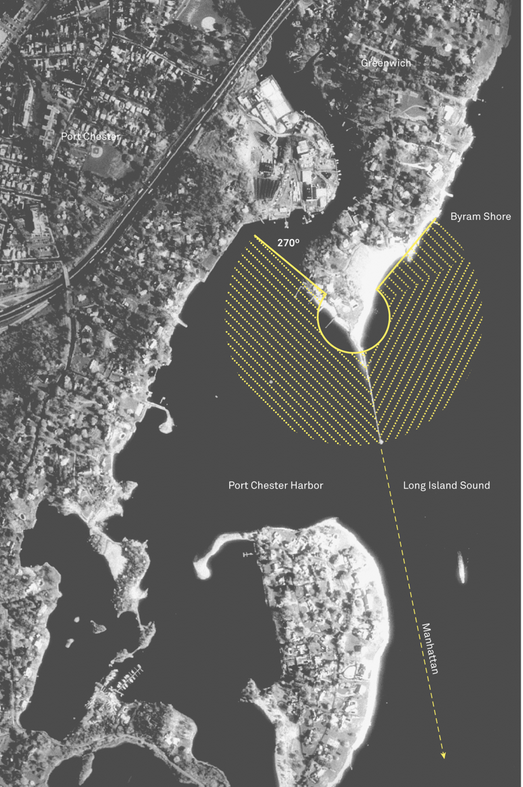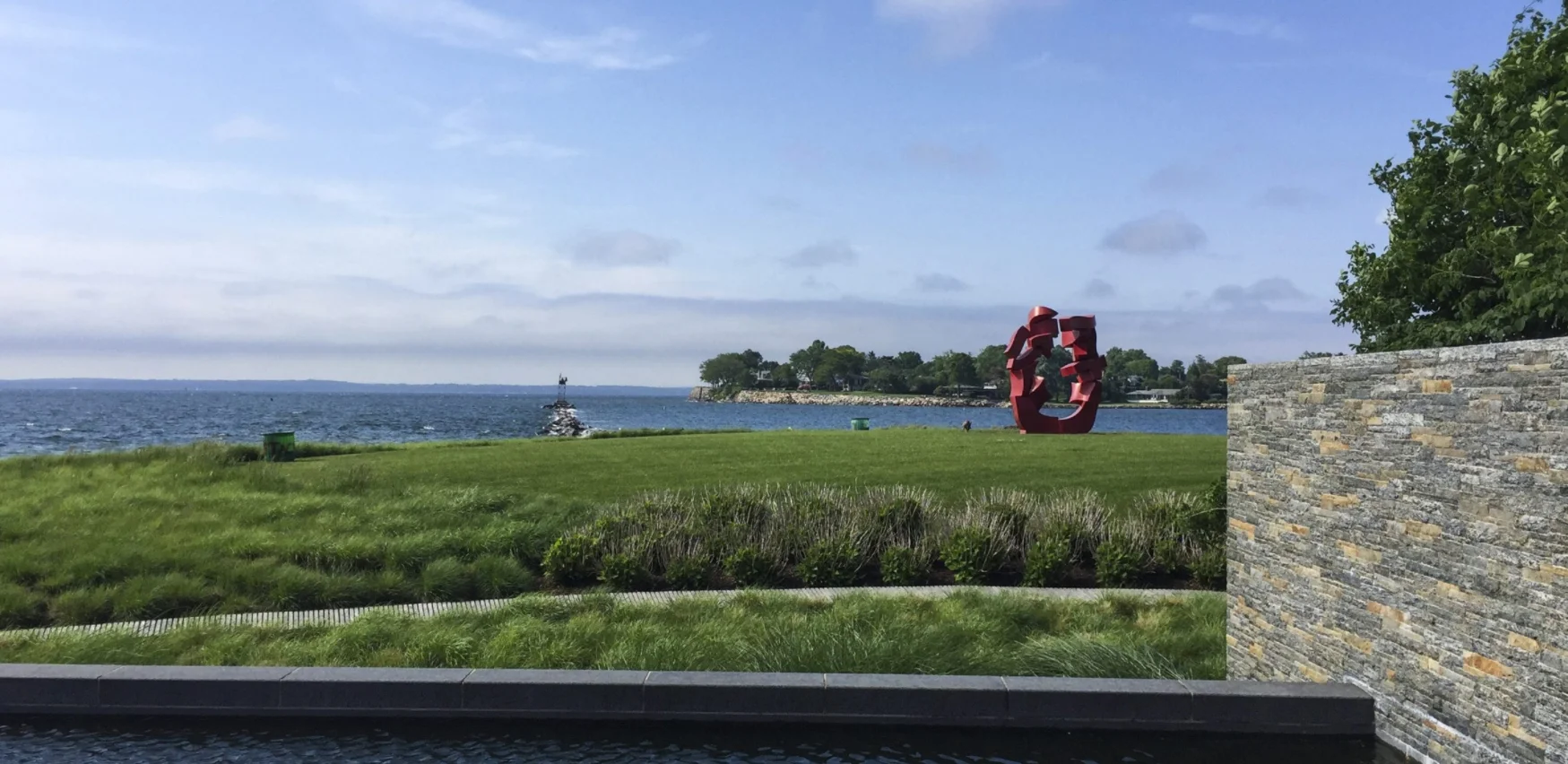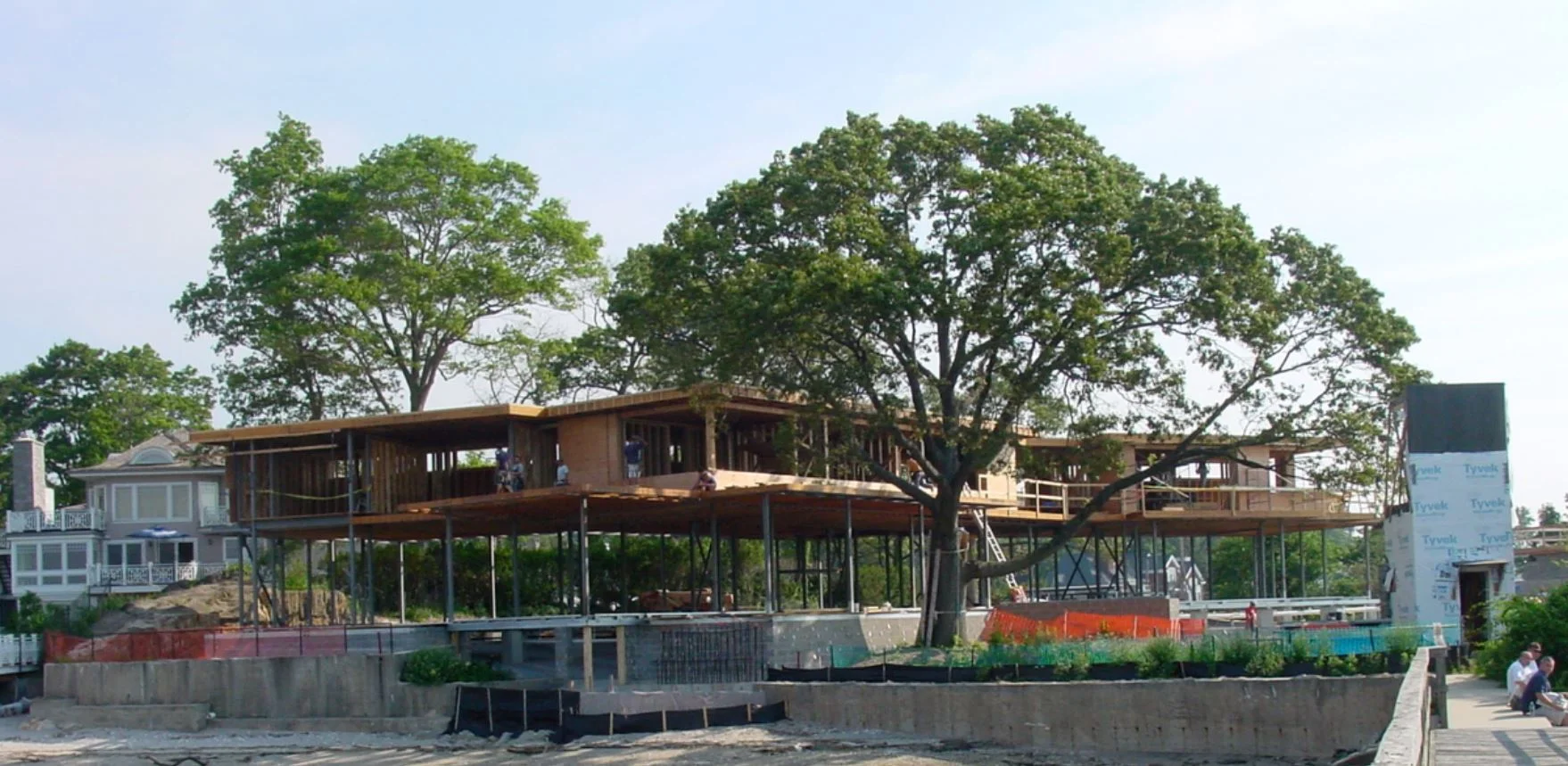
The experiences I've had as an architect continue to form the foundation of my understanding and practice of design. There is nothing more human-centric than architecture. Architecture is about performing a program with regards to a persons body, background, habits, and relationships. This obsession with the relationship between design and user is fundamental to both good architecture and UX design/development, and many lessons can carry over from one practice to another, forming a solid foundation for design.
Values: understand the user
Methodology: high concept to practical design
Practice: communicate > represent > execute
–
2009
–
"270 degrees"
-
The project shown here is the LIS Residence (short for Long Island Sound). Sitting on the very tip of a peninsula, this plot has stunning 270° views of the sound but lies at the end of a densely populated road. This relationship forms the basis of a design concept that divides the house into a solid, private side (facing the neighbors) and a porous, open side facing the sound. In this section, I'll cover some of these lessons such as: developing a concept, collaborating with various professions, managing edge cases, and ultimately delivering a final project.


Concept to Design
The design of the LIS Residence starts and ends with understanding the clients. Wealthy and high-profile, they really valued their privacy. On the other hand, this was their summer retreat from a busy, urban life in Manhattan. These factors informed a concept of duality. Keep the residential side opaque and the natural side transparent. In this design the layout of the site and the view it offered became a driving element of form, hinging the house to maximize views of the sound.



Tectonic to Tactile
Architects and app designers alike must consider every aspect of the design from the basic form to the underlying structure to the surface. As with any project, every level of the LIS Residence design was driven by the user from the feel and ergonomics of the handles they'd touch to the presentation of the art and furniture they owned.


Practice and Execution
Architects are the defacto executors of a project, meaning that in addition to designing they also oversee: coordination with the other consultants (structural, electrical, HVAC, interiors, legal, and others) and the actual construction and delivery (builders, fabricators, mill workers, material delivery, and more). In the end, they do walktrhoughs to inspect each and every detail to ensure that the client is happy. They also become the point of contact for the client, understanding and managing their satisfaction with the project.
In a software development context architects would be designers, project managers, and QA. It's a skill set that carries over, making architects well rounded contributors to any team.
Architectural, Structural, Lighting, Electrical, HVAC, Plumbing
Closing thoughts
-
As shown through the LIS Residence, architecture has provided the training and experiences that made me the designer I am today. I had to perform the process of understanding the client, developing concepts, designing elegant solutions, and executing to delivery. These traits are all things that carry over well into my practice of software design and development, making me a big picture thinker, good communicator, and excellent leader.
However, more than anything, architecture has imbued me with the values and spirit of a designer. I see design as the combination of art and engineering: The nature of art being to communicate an idea while that of engineering being to solve a problem. Therefore, design is the practice of solving a problem with a solution that has "something to say." It's how we as designers communicate our values to the users we serve.




